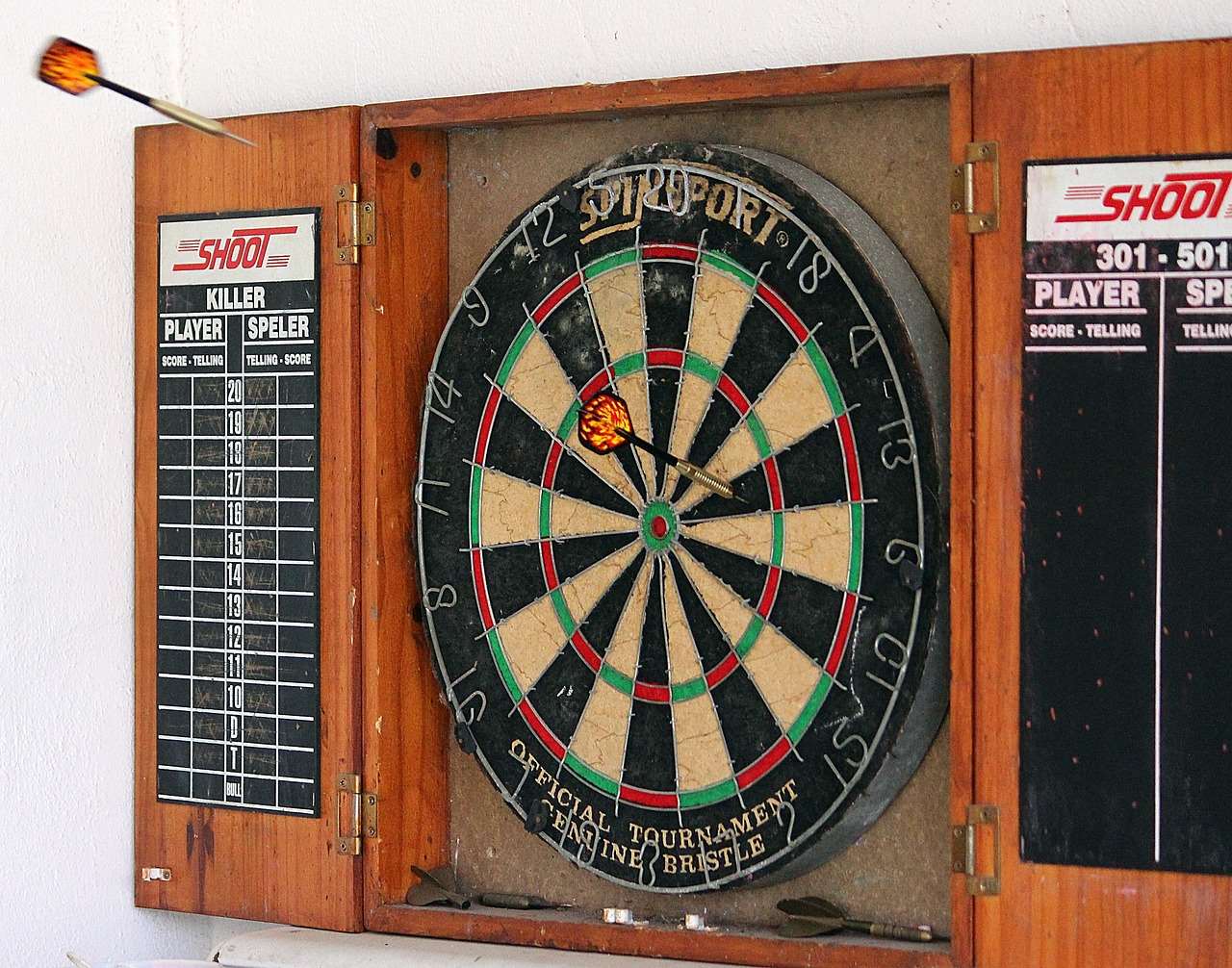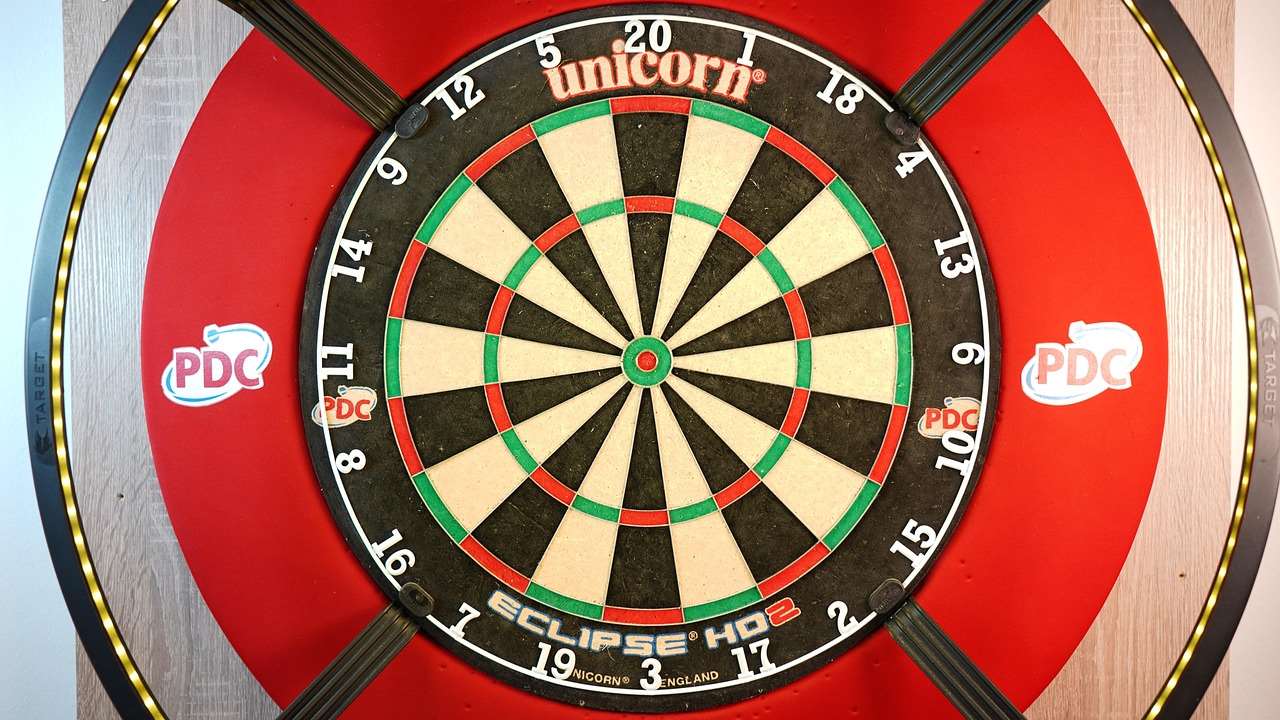Understanding your **Oche Mats Throw Line Options Explained** is crucial for consistent dart throwing and fair play. This article explores the various types of oche mats, the different materials they’re made from, the pros and cons of each, and how to choose the right one for your needs, ensuring you’re always toeing the line—literally.
⚠️ Still Using Pen & Paper (or a Chalkboard)?! ⚠️
Step into the future! The Dart Counter App handles all the scoring, suggests checkouts, and tracks your stats automatically. It's easier than you think!
Try the Smart Dart Counter App FREE!Ready for an upgrade? Click above!
Why Your Throw Line Matters
The **throw line**, or **oche**, is the line from which a dart player must throw. Its position is carefully regulated to ensure fair competition. Using an oche mat guarantees that this line is consistently and accurately placed, preventing disputes and promoting good sportsmanship. More than just a line on the floor, it’s a crucial piece of equipment for serious dart players, impacting everything from stance to scoring. Furthermore, having a designated throw line helps protect your floor from scratches and wear caused by repeated foot placement.
Ignoring the importance of a well-defined and accurately measured throw line can significantly impact your dart game. Inconsistent distances can throw off your muscle memory and lead to frustrating inaccuracies. Using an oche mat eliminates this variable, allowing you to focus on refining your technique and improving your score.

Types of Oche Mats: Throw Line Options Explained
When considering oche mats throw line options explained, you’ll find several distinct types, each offering unique features and benefits. Understanding these differences is key to selecting the best mat for your game and playing environment.
Rubber Oche Mats
Rubber oche mats are perhaps the most common and readily available type. They offer good durability and grip, preventing slippage during your throw. They’re typically made from recycled rubber, making them an environmentally conscious choice. Rubber mats are also relatively easy to clean and maintain.
- Pros: Durable, good grip, affordable, easy to clean, eco-friendly.
- Cons: Can be heavy, may have a rubbery odor initially, some cheaper versions may lack sufficient cushioning.
Foam Oche Mats
Foam oche mats offer enhanced comfort and cushioning, reducing fatigue during long practice sessions. They’re typically lighter than rubber mats and provide excellent sound dampening. Foam mats often come in vibrant colors and designs, adding a touch of personality to your dart setup. The best dart equipment often includes a good quality oche mat.
- Pros: Comfortable, lightweight, good sound dampening, available in various designs.
- Cons: Less durable than rubber, more susceptible to tears and punctures, may compress over time.
Carpet Oche Mats
Carpet oche mats provide a more aesthetically pleasing option, blending seamlessly with your home decor. They typically feature a non-slip backing to prevent movement during play and offer a comfortable surface to stand on. Some carpet mats even include raised throw lines for added precision.
- Pros: Aesthetically pleasing, comfortable, non-slip backing, some include raised throw lines.
- Cons: Can be more expensive than rubber or foam mats, may require professional cleaning, less durable than rubber.
Folding Oche Mats
Folding oche mats are perfect for portability and storage. They can be easily folded up and packed away when not in use, making them ideal for players who don’t have a dedicated dart space. These mats are often made from lightweight materials like nylon or polyester.
- Pros: Portable, easy to store, lightweight.
- Cons: May not be as durable as other types, can be prone to creasing, may require additional weights to prevent movement.

Key Features to Consider When Choosing
Beyond the material, several other factors influence your choice of **oche mat**. Consider these points when making your decision:
Thickness and Cushioning
The thickness of the mat affects its comfort and durability. Thicker mats provide more cushioning, reducing fatigue and protecting your feet. They also tend to be more durable and resistant to wear and tear. Consider how much time you’ll spend playing darts and choose a mat with adequate cushioning for your needs.
Grip and Stability
A good oche mat should provide excellent grip and stability, preventing you from slipping during your throw. Look for mats with non-slip backings or textured surfaces to ensure a secure footing. The stability of the mat is crucial for maintaining balance and accuracy.
Throw Line Markings
Clear and accurate throw line markings are essential for consistent play. Some mats feature printed lines, while others have raised or textured lines for tactile feedback. Ensure the markings are easily visible and correspond to the regulation distance for your preferred dart game.
Size and Coverage
Consider the size of the mat and the amount of floor space it covers. A larger mat provides more protection for your floor and offers a wider area for you to move around. However, make sure the mat fits comfortably in your playing area without obstructing doorways or other furniture.
Setting Up Your Oche Mat
Proper setup of your oche mat is crucial for ensuring accurate and fair play. Follow these steps to correctly position your mat:
- Measure the Distance: Use a tape measure to accurately measure the regulation distance from the dartboard to the throw line. For steel-tip darts, this is typically 7 feet 9 1/4 inches (2.37 meters).
- Position the Mat: Place the oche mat so that the throw line aligns with your measured distance. Ensure the mat is straight and centered in front of the dartboard.
- Secure the Mat: If necessary, use double-sided tape or non-slip pads to secure the mat to the floor and prevent movement during play.
- Verify Accuracy: Double-check the distance from the dartboard to the throw line after positioning the mat to ensure accuracy.
Regularly check the position of your oche mat to ensure it hasn’t shifted over time. This is particularly important if you’re using a mat that isn’t securely attached to the floor.
Maintaining Your Oche Mat
Proper maintenance will prolong the life of your oche mat and keep it looking its best. Follow these tips to keep your mat in top condition:
- Regular Cleaning: Clean your oche mat regularly with a damp cloth or sponge to remove dirt and debris. For more stubborn stains, use a mild detergent.
- Avoid Harsh Chemicals: Avoid using harsh chemicals or abrasive cleaners, as these can damage the mat’s surface and shorten its lifespan.
- Proper Storage: When not in use, store your oche mat in a cool, dry place away from direct sunlight. This will prevent fading and warping.
- Repair Tears and Punctures: Repair any tears or punctures promptly to prevent them from getting larger. Use a suitable adhesive or patching material to repair the damage.
By following these maintenance tips, you can ensure that your oche mat remains in good condition for years to come.

Alternatives to Oche Mats
While **oche mats** are the most common solution, other options exist for marking your throw line. These alternatives may be suitable for players on a budget or those with limited space.
Tape or Paint
Using tape or paint to mark your throw line is a simple and inexpensive option. However, it’s less durable than an oche mat and may require frequent reapplication. Ensure you use a durable tape or paint that won’t easily wear away. Consider this if you’re finding value in budget dart sets but want a throw line now.
Raised Threshold
A raised threshold, such as a piece of wood or metal, can provide a more permanent and tactile throw line. This option requires more effort to install but offers greater durability than tape or paint. Make sure the threshold is securely attached to the floor and doesn’t pose a tripping hazard.
DIY Solutions
Creative dart players have devised various DIY solutions for marking their throw lines, such as using rope, tile, or even repurposed materials. These options allow for greater customization and can be a fun and budget-friendly alternative to commercial oche mats.
While these alternatives may suffice, investing in a quality oche mat provides the most accurate and consistent throw line, enhancing your dart game and preventing disputes.

Making the Right Choice for Your Game
Choosing the right **oche mat** is a personal decision that depends on your individual needs and preferences. Consider the factors discussed in this article, such as material, thickness, grip, and throw line markings, to make an informed choice. Remember, a good oche mat is an investment in your dart game, providing a consistent and fair playing surface that will enhance your skills and enjoyment. Knowing your **Oche Mats Throw Line Options Explained** will ensure you are buying exactly what you need.
Whether you’re a casual player or a seasoned professional, a quality oche mat is an essential piece of dart equipment. So, take the time to research your options and choose the mat that’s right for you. The buying guide budget premium dart sets will also help you make the best choice for your needs.
Oche Mats Throw Line Options Explained: Final Thoughts
In conclusion, **Oche Mats Throw Line Options Explained** have a huge impact on gameplay, promoting fairness, consistency, and preventing injuries. Choosing the right mat involves understanding the various materials, features, and setup requirements. Whether you prefer the durability of rubber, the comfort of foam, or the aesthetic appeal of carpet, selecting the appropriate oche mat will undeniably elevate your dart playing experience. Invest in a quality oche mat today and step up your game! Check out our selection and Choose Best Dart Equipment now!
Hi, I’m Dieter, and I created Dartcounter (Dartcounterapp.com). My motivation wasn’t being a darts expert – quite the opposite! When I first started playing, I loved the game but found keeping accurate scores and tracking stats difficult and distracting.
I figured I couldn’t be the only one struggling with this. So, I decided to build a solution: an easy-to-use application that everyone, no matter their experience level, could use to manage scoring effortlessly.
My goal for Dartcounter was simple: let the app handle the numbers – the scoring, the averages, the stats, even checkout suggestions – so players could focus purely on their throw and enjoying the game. It began as a way to solve my own beginner’s problem, and I’m thrilled it has grown into a helpful tool for the wider darts community.